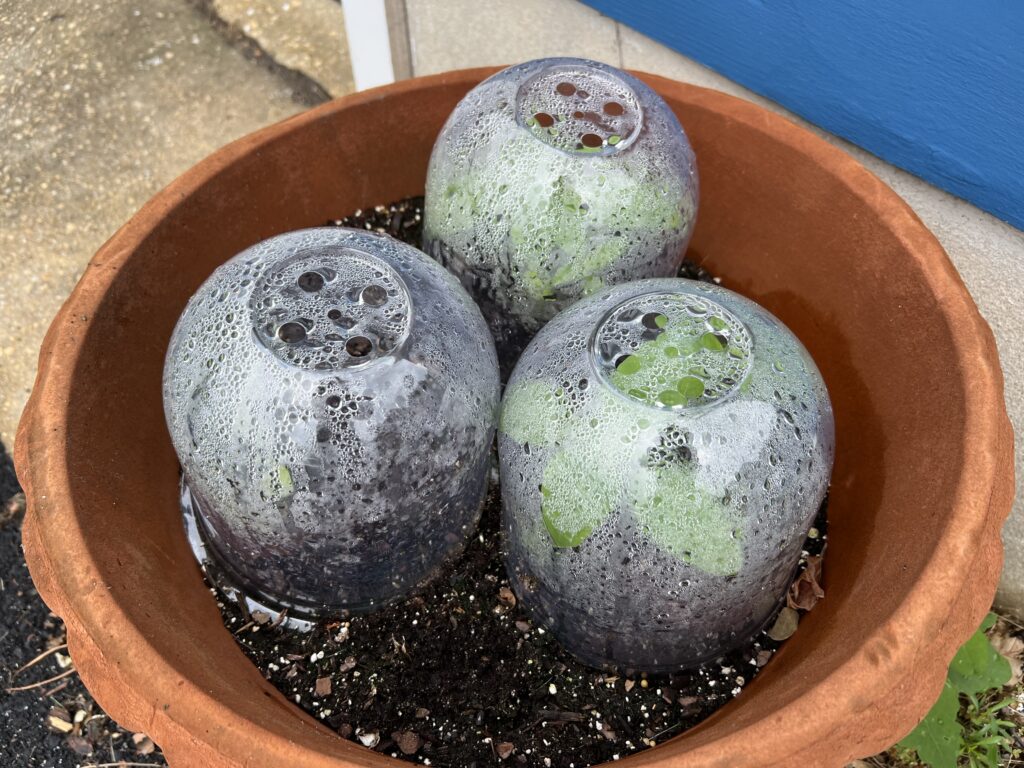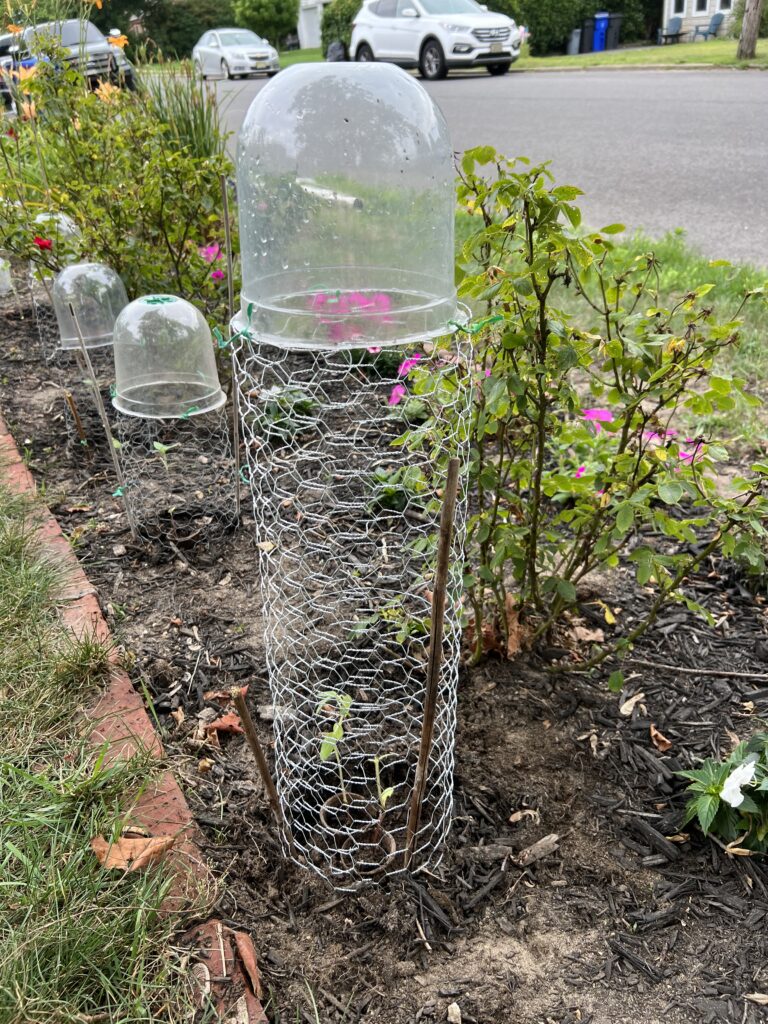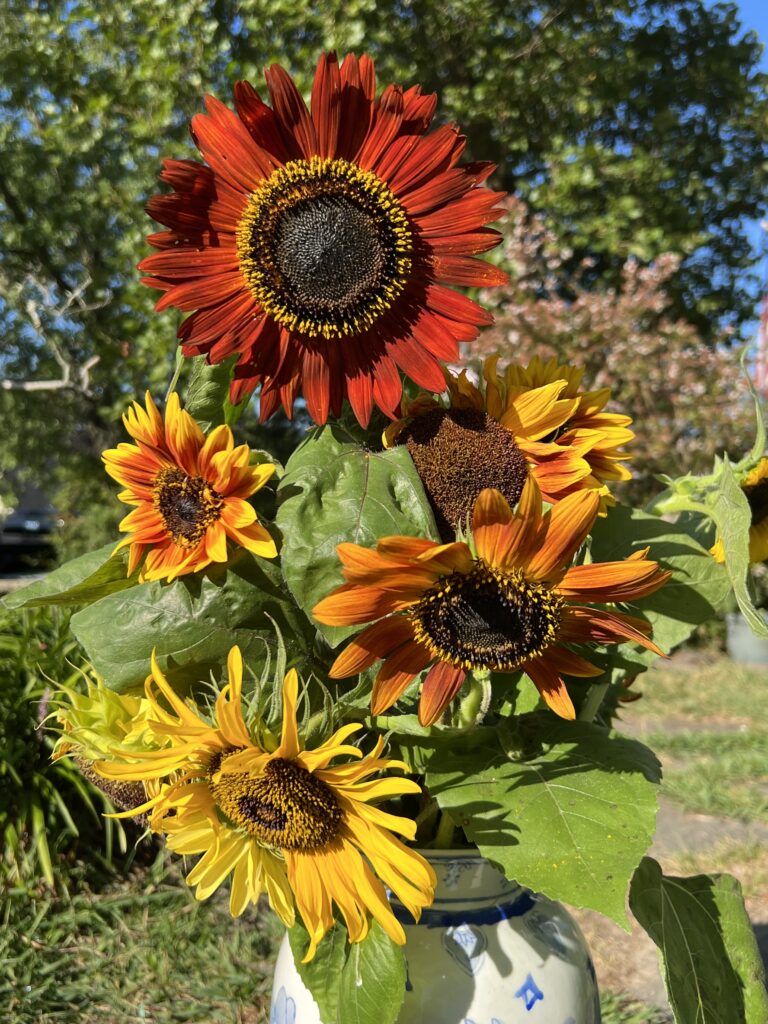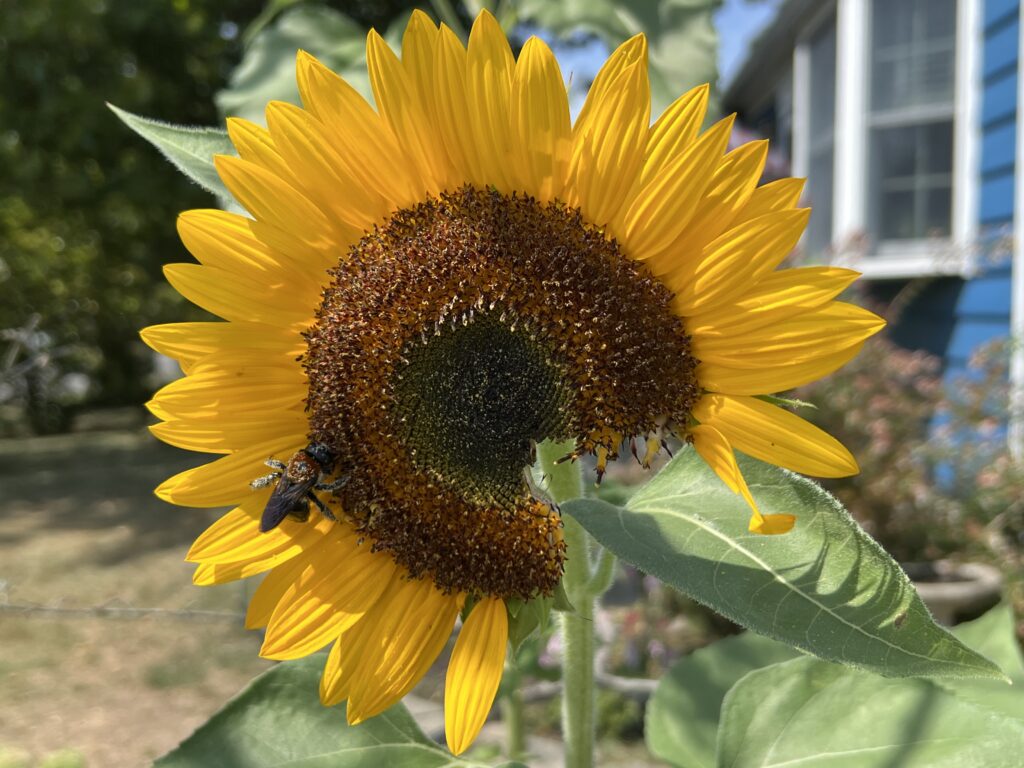The exuberant sunflower symbolizes happiness and peace throughout the world. If you’d like to bring a little more joy and beauty into your life, you may want to try growing them in your garden. But if you have birds, rabbits, chipmunks, and especially squirrels in your yard, raising sunflowers can be very challenging.
I was determined to protect my seedlings and plants, and with the help of biodegradable cups, domes, cages, and LOTS of work, I grew dozens of GORGEOUS sunflowers. If you have plenty of patience, give it a try! The stunning blooms make all the effort worthwhile. Or, get out in nature and visit a sunflower farm, for an easier path to bliss.
Watch this video to learn a few of my (time-consuming!) tips to protect these precious plants, or read the full article below the video.
“The Joy & Frustration of Growing Sunflowers Among Wildlife”
There’s something magical about sunflowers. From tiny seeds they morph into giant plants that symbolize happiness, good luck, and peace around the world. And the sunflower’s strength and resilience are inspiring. If you want to cultivate more joy in your life, I highly recommend growing sunflowers. But be forewarned, if you live in an area with lots of wildlife, raising sunflowers is likely to be an equal mix of fun and frustration.
I took some seeds from a variety packet and put them on a damp paper towel in a plastic bag for a couple of days to speed germination. Typically, sunflower growing gurus recommend sowing seeds outside, directly in the soil, but that just doesn’t work in suburban New Jersey. Most of the seeds will be eaten by birds, chipmunks, squirrels, or rabbits, and the seedlings that do grow, will quickly have their tiny stems sawed off by cut worms and other garden pests.
So, I start my seeds inside little biodegradable cups or small pots to give them a leg up, then carefully transplant the seedlings outside, cutting off the bottom of the plastic pots so the tap root won’t be damaged. Then the daily battles with the animals begin!
We have just one feeder in our yard, but it’s enough to attract not only tons of birds, but lots of other sunflower-loving creatures. Since I don’t want a giant fence with mesh netting in my front yard, I use plastic domes to shield the young plants. As the plants quickly grow, I create cages out of one-inch chicken wire (one-foot tall) then attach the dome so chipmunks don’t climb over the top. This is a very time consuming, crazy amount of work, so it’s really only practical for a very small crop.


Even with some elaborate setups, some seedlings are destroyed, especially after they grow tall so the domes have to come off. The tops of the plants often suddenly disappear. So, I built cages twice as high, this time two-feet tall. Next year I’ll start with these taller ones. Now when the plants reach the top and the domes are taken off, the sunflowers are a bit hardier, and they grow more or less in peace. Still, some have nearly all their leaves shorn off, but remarkably they still manage to keep growing.
The sunflowers that did the very best were planted in two large pots. Twelve grew in all, and extensive, unattractive caging mostly kept the critters out.
Despite my best efforts, sadly many plants throughout the garden got knocked over by squirrels. Those whose stems were bent but not totally broken, I repaired with splints made out of Q-tips and Band-Aids or gaffer’s tape. There is also special gardening tape you can use. To my amazement, this worked, and all the resilient, damaged sunflowers grew and eventually produced lovely blooms.
Some smaller casualties were brought inside to see whether their tiny buds would open over time, and they did. As long as possible, I like to keep the plants growing outside to watch the ray florets slowly open, gradually over a few days, revealing their gorgeous colors — sunshine yellow, burnt orange, warm cinnamon, even brilliant red. The bees love the pollen in these exquisite flowers, too.
In the end, I must cut the sunflowers or lose them all to the squirrels who sense when the seeds are developing, and attack indiscriminately. One magnificent, large bloom had a chunk bitten off, long before the seeds were mature. Then, still more beauties were knocked down, and I knew it was time to act. I quickly cut all the stems with blooms open so I could enjoy some cheery sunflower sunshine inside. By starting some plants a couple of weeks after the initial batch, I am able to have gorgeous sunflowers inside for weeks.

After the sunflowers were finished blooming, and the heads dried out, I selected a few of my favorites, numbering and photographing them for identification next year, and then harvested the seeds.
I threw some wilted heads outside, a distraction and sort of peace offering for the animals. One squirrel came by who seemed suspicious, as though he couldn’t believe his good luck, wondering if it was a booby trap, before giving in to temptation and scurrying off to eat his prize.
Sunflower gardening is a great hobby to boost happiness, nurturing something spectacular—from tiny seed to glorious showpiece. You’ll be amazed by the sunflower’s resilience, standing straight and tall despite tough times, and continuing to grow and thrive, and open up to life.
If you don’t have the space at home or the patience to grow these stunning flowers, take a trip to a sunflower farm. It’s a guaranteed pick-me-up, an over-the-top dose of magic, an exuberant reminder to get out in nature for a beautiful path to more joy.
For more inspiring, joyful stories, subscribe to @SandraLevineProd on YouTube, and this blog.

